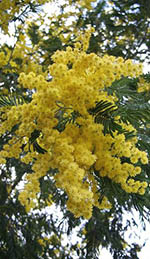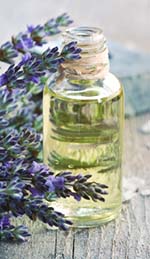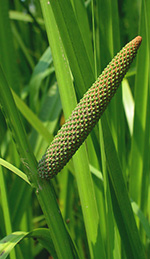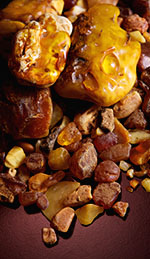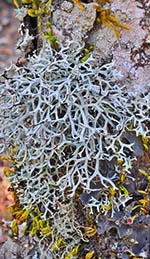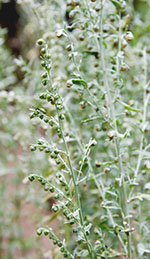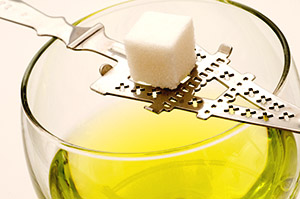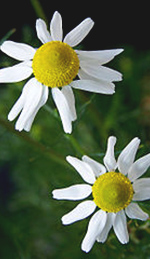 I’m not one to throw supposed benefits around brazenly when it comes to herbal products, and especially, perhaps, with essential oils. I am the eternal skeptic, but one who is willing to do what it takes to examine both sides of an issue with the vigor required to get a balanced answer that I am satisfied with. Rarer has this been true than with the story of Chamomile. It is one of the best-known herbs, and after finding out how intoxicating the scent of fresh Chamomile was when growing it in my own garden, I had to dig my heels in and do some research.
I’m not one to throw supposed benefits around brazenly when it comes to herbal products, and especially, perhaps, with essential oils. I am the eternal skeptic, but one who is willing to do what it takes to examine both sides of an issue with the vigor required to get a balanced answer that I am satisfied with. Rarer has this been true than with the story of Chamomile. It is one of the best-known herbs, and after finding out how intoxicating the scent of fresh Chamomile was when growing it in my own garden, I had to dig my heels in and do some research.
In my research of Scientific Proof of Essential Oil Effectiveness, I was determined to find papers on every single individual oil we offered here at EOX. One of the initial finds was a paper from 2010 called “Evaluation of the sesquiterpene bisabolol as a novel peripheral nervous blocker”. Yes, it seems really scientific, but sometimes within the flashy academic titles are some easy-to-read results. Since my search term included “Chamomile”, I decided to read on:
What this study discovered, was that a component that exists in more than one essential oil, known as a “terpenes” (especially monoterpenes and sesquiterpenes) have measurable effects on the Central Nervous System. Two of these measurable effects are anti-anxiety (anxiolytic) and pain blocking (antinociceptive). Since many of the Top Essential Oils we offer are in the category of anti-anxiety / stress reduction / relaxing / calming, and support for pain, this was especially intriguing to me.
Without getting too technical; Bisabolol is an unsaturated monocyclic sequiterpene alcohol, which is the major constituent in German Chamomile. (That is exactly why we offer only German Chamomile, with confirmed high concentrations of bisabolol in every freshly-distilled batch.) The study found that the pain-relieving properties of bisabolol to be so effective, that the researchers concluded that any essential oils rich in bisabolol could potentially be good candidates for assistance with pain reduction.
In their own words, they concluded this:
Therefore, we conclude that bisabolol, a natural sesquiterpene found in some aromatic plant species, reduced the neuronal excitability in a concentration dependent manner. “
What this means is that they found German Chamomile to be an effective natural means of both reducing pain and anxiety. Not a bad one-two punch for an esteemed and ancient herb.
The good news for Chamomile enthusiasts is that the constituents responsible for the main effects in Chamomile are soluble in hot water. They are also present in high quality essential oils, as the ones offered by us here at EOX. I was unable to find any human studies on the anti-inflammatory and pain relieving actions of Chamomile, but there was a plethora of data with tests conducted on rats. Within those studies, comparisons were made between Chamomile extracts and both benzydamine (a popular anti-inflammatory) and hydrocortisol.
Although the Chamomile didn’t have properties equal to hydrocortisone, it did compare, side by side, with benzydamine. This is extraordinary. But, before you decide to throw away all your over the counter medications for an infusion of Chamomile, note that to achieve the same level of effects, the Chamomile was more concentrated than a cup of tea, topical application, or inhalation of Chamomile Essential Oil. It’s exciting to know, though, that this natural herbal product that’s been used for thousands of years to help decrease both pain and anxiety, has been proven to possess those exact characteristics.
And, the amount required isn’t that much higher than what one might enjoy before bedtime if they’re trying to get to sleep with reduced pain. For reference, 50g of dried Chamomile flowers were boiled in 1 liter of water. In mice, the result was Chamomile-induced sleep! We have plenty of anecdotal evidence from humans, but it is easy to see the potential that Chamomile can have for us humans. I’ve combined some Chamomile in my diffuser, brewed a strong cup of Chamomile tea, and I can honestly report that I felt a noticeable decrease in pain, and not only was able to fall asleep more easily, but I enjoyed a more restful sleep as well.
As anyone who reads my articles knows, I come from the perspective of a scientist and a sceptic. So, I never take anything at face value, and never trust a single result. So, my Chamomile experiments lasted over the course of 2 weeks. I wanted to record various conditions; hard workdays, leisurely weekends, both stressful and non-stressful days, and so on.
Out of those 14 days, I was able to conclusively say that I was able to fall asleep easier. Fourteen out of those fourteen days, I could also conclusively say that the pain I usually feel in my calves and joints of my fingers were noticeably reduced. This may have added to my feelings of calmness and my anxiety reduction, and it may have helped me to fall asleep more easily, but the results are the results and I couldn’t be more pleased.
And, as always, this is just a single case and a single person’s results. I would be extremely interested to hear anyone share their experiences with Chamomile below. Positive or negative, I’m all ears. I know that all herbs don’t work for all people, but Chamomile (German) is one of those herbs that have withstood the test of of time, and continues to be one of the top selling single ingredient teas of all time.
REFERENCES:
Alves, Aron de Miranda H., Goncalves, Juan Carlos R., Cruz, Jader Santos, Araujo, Demetrius Antonio, M., 2010. Evaluation of the sesquiterpene (−)-α-bisabolol as a novel peripheral nervous blocker. Neuroscience Letters 472(2010):11-15.
McKay, Diane L.; Blumberg, Jeffrey B. 2006. A Review of the bioactivity and potential health benefits of chamomile tea (Matricaria recutita L.) and their glucosides. Phytotherapy Research 20(7).

